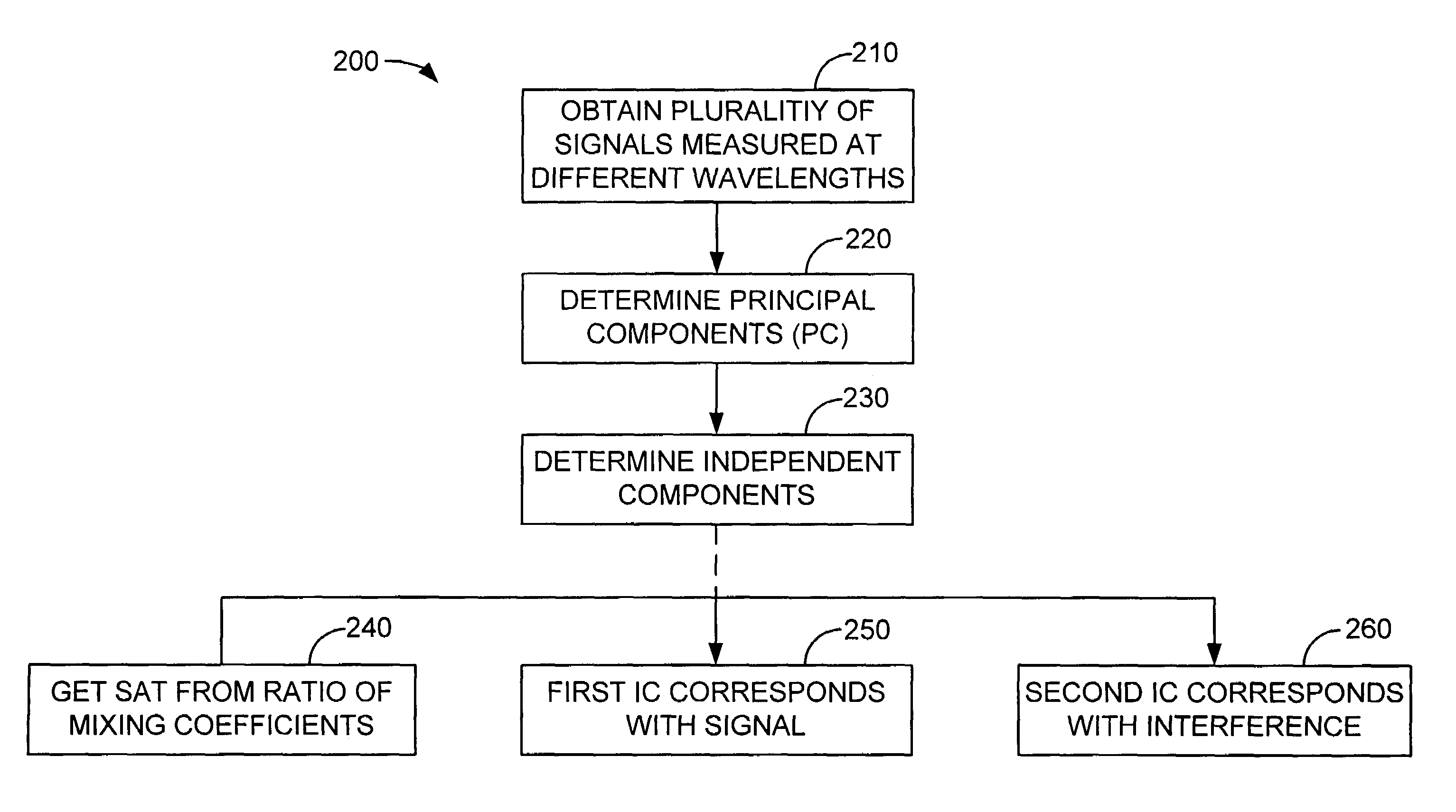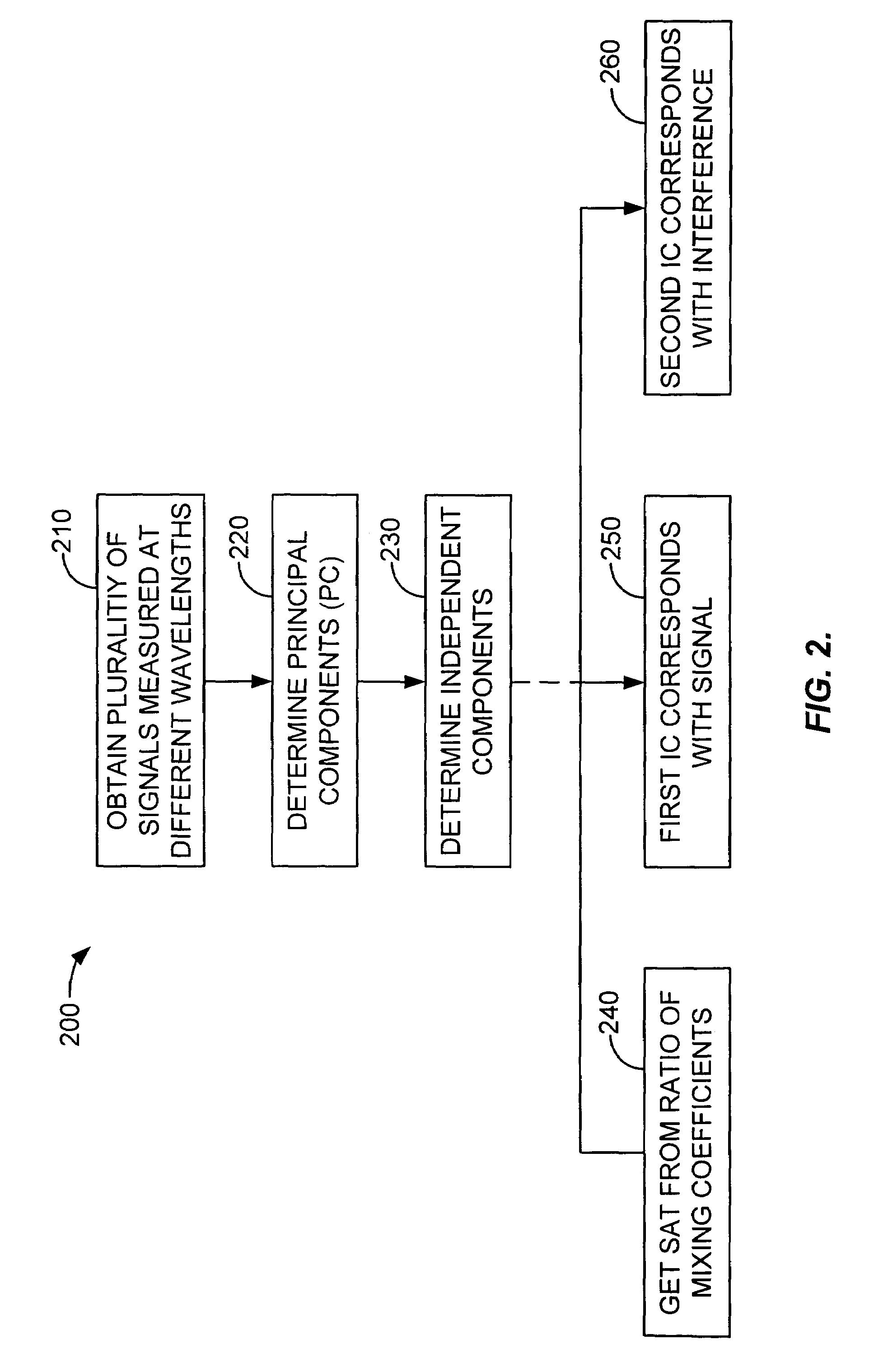Blind source separation of pulse oximetry signals
a pulse oximetry and source separation technology, applied in the field of signals processing, can solve the problems of unsuitable multivariate data representation, difficult to accurately estimate cumulants of higher than fourth order, and unique challenges in the implementation of pulse oximetry methods, etc., to achieve the effect of enhancing the performance of ica and minimizing cross-correlation
- Summary
- Abstract
- Description
- Claims
- Application Information
AI Technical Summary
Benefits of technology
Problems solved by technology
Method used
Image
Examples
Embodiment Construction
[0024]The present invention is directed towards the application of Blind Source Separation (BSS), specifically Independent Component Analysis (ICA) to pulse oximetry. ICA refers to any one of several methods for separating unknown source signals from a set of “mixture” signals, which are linear combinations of the source signals. The ICA method as embodied by the present invention, uses estimates of the second- and higher-order joint statistics of the mixture signals and separates the sources by seeking to minimize the mutual information of the outputs of separation. In pulse oximetry, the signals measured at different wavelengths represent the mixture signals, while the plethysmographic signal, motion artifact, respiratory artifact and instrumental and environmental noise represent the source components.
[0025]In one embodiment, the BSS is carried out by a two-step method including an ICA. In the first step, the method uses Principal Component Analysis (PCA) as a preprocessing step,...
PUM
 Login to View More
Login to View More Abstract
Description
Claims
Application Information
 Login to View More
Login to View More - R&D
- Intellectual Property
- Life Sciences
- Materials
- Tech Scout
- Unparalleled Data Quality
- Higher Quality Content
- 60% Fewer Hallucinations
Browse by: Latest US Patents, China's latest patents, Technical Efficacy Thesaurus, Application Domain, Technology Topic, Popular Technical Reports.
© 2025 PatSnap. All rights reserved.Legal|Privacy policy|Modern Slavery Act Transparency Statement|Sitemap|About US| Contact US: help@patsnap.com



